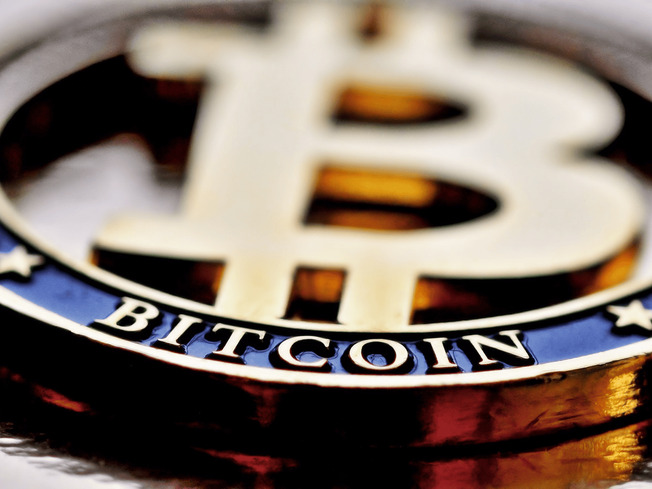
Warren Buffett is one of the most idolized, revered, and imitated investors in the world.
- Early Years
Warren Buffett was born on the 30th August 1930, in Omaha, Nebraska. His father Howard was a stockbroker, with his own brokerage firm, and his mother Leila was a housewife. Buffett had two sisters, one older than him and one younger.
As a child, Warren would spend time at his father’s brokerage firm, writing numbers on the chalkboard and reading the books that were there. He was close to his father and describes him as affectionate and inspirational. He credits a lot of his success to him and says he was the one who introduced him to investing and his love of books.
When Buffett was 11, his father took him on a trip to New York. The main things Buffett wanted to see were the New York Stock Exchange, The Scott Stamp, and Coin Company, and The Lionel Train Company. When he saw the NYSE for the first time, he saw a young boy rolling cigars for the traders to keep them happy, this is when he realized that stock investing was where the money was.
At only 11 years old, Buffett made his first real investment, using the money he had earned so far (around $120) to buy his first stocks.
He decided to buy shares for himself and his sister, in an oil and gas company called Cities Service. They each bought 3 shares priced at $38.25 per share. After investing in these, the price quickly dropped to around $27 per share, but an anxious and scared Buffett held on tight and waited until the price increased to around $40, at which point they sold and took a small profit.
While in High School he started Stable Boy Selections with his friend, which was a horse racing tip sheet. They would use mathematical odds to work out tips and type them out on a typewriter. This was later shut down since they did not have a license. Buffett also worked in his grandfather’s grocery store at weekends, as well as starting a paper round.
He was delivering newspapers for The Washington Post, but since he was so business-minded, he eventually expanded his paper round route and even started delivering papers for the Washington Post’s competitor The Times Herald, along the same route. He earned a lot from this job as a paperboy and it all added to the good amount of savings that he was building up.
Buffett graduated from high school in 1947 at the age of 17, with the caption under his yearbook picture reading: “likes math; a future stockbroker”.
After graduation, Buffett was not particularly interested in further studies, considering the amount of money he was already earning, he thought it would slow him down.
His father persuaded him to enroll at the Wharton School of the University of Pennsylvania. Buffett studied Business for 2 years, but he wasn’t happy and felt he knew more than his professors, so he moved to the University of Nebraska where he graduated at 19, earning his degree in Business Administration.
- After Graduation
After graduation, Buffett wanted to go to Harvard Business School, as he thought this would be more mentally stimulating and give him a chance to learn more. Sadly he got rejected.
Instead, he decided to go to the Columbia Business School to study for his Masters. Buffett chose Columbia after reading the book “The Intelligent Investor” by Benjamin Graham, which Buffett says is the best book about investing ever written.
When he heard that Graham taught at Columbia, he had to go there. Graham became a massive influence on Buffett, who says he was one of the most influential people to him after his father.
After graduating, Buffett was very keen to go straight to working on Wall Street, but both his father and Benjamin Graham pleaded with him not to. Buffett even offered to work for Graham for free but Graham refused, so he returned to Omaha and started working at his father’s brokerage firm.
As a very introverted, shy, and nervous person, Buffett decided to take a Dale Carnegie public speaking course. He credits this as being one of his most important investments and claims he wouldn’t be where he is today if he didn’t take that class.
It was around this time that Buffett met his first wife Susie. They were married in 1952 and lived in a small run-down apartment. They had their first child, Susie, and to save money they turned a drawer into a bed for her.
- Starting his own partnership
In 1956, Buffett decided to leave the partnership and move back to Omaha. It was here that he started his own partnership called Buffett Associates Ltd. Seven family members and friends invested $105,000 in total, with Buffett only investing $100 himself. By the end of the year, he was managing around $300,000.
Buffett had two more children and, with a growing family, he decided to buy a house for $31,500, which was nicknamed ‘Buffett’s Folly’. He used one of the bedrooms to manage the partnership before they got an office.
In 1960, Buffett spoke to one of the partners who was a doctor, and asked him if he could get another 10 doctors to invest $10,000 each, he succeeded in this and got 11 doctors to invest.
By 1962, the partnership was now worth $7.2 million, and Buffett decided to merge all the partnerships together into one; forming Buffett Partnership Ltd. The minimum investment amount was $100,000.
Buffett dissolved the partnership in 1969 as he said he was unable to find any bargains in the current market. He liquidated all the assets apart from Berkshire Hathaway and Diversified Retailing. He distributed all the partners’ shares of Hathaway but kept his own holding which stood at 29%.
- Berkshire Hathaway
Buffett started buying stocks in Berkshire Hathaway in 1962 when it was mainly run as a textile company and was owned by Seabury Stanton.
In 1964, Stanton offered to buy the shares back off Buffett at $11 1/2 per share. Buffett agreed, thinking the business was not going to improve.
However, when Buffett received the offer in writing a few weeks later, the offer said $11 3/8. This sneaky attempt at gaining an extra eighth made Buffett angry.
He decided not to sell and instead continued to buy more shares in the company. He eventually took over Berkshire in an act of retribution and fired Stanton. He announced Ken Chace as the new president of the company instead.
Buffett tried to stick with the textiles part of the business at first but realized there was not much profit in it and started to phase it out. He started investing in insurance companies instead, and in 1967 bought the National Indemnity Company and National Fire & Marine Insurance Company.
In 1970, Buffett named himself as Chairman of the Board at Berkshire Hathaway and wrote his first letter to the shareholders. These letters from Buffett would later become very famous and something studied by many investors around the world.
- Buffett in the 90s
The 90s brought an interesting new challenge for Buffett and his portfolio but also presented us with an ideal example of how he can stick to his plan despite any possible temptations. Ultimately he was proven to be right over the long-term.
In the late 90s, the lure of the new dot.com companies was simply too appealing for most investors and it soon became a bubble. Buffett, on the other hand, steered clear.
In his letter to shareholders, he claimed that technology investors had overstayed the party. He said value is destroyed, not created by any business that loses money over its lifetime.
If we look back at the investing philosophy he learned from Benjamin Graham, it’s clear that the tech businesses during this time didn’t represent the companies he looks for.
During this time, many people thought Buffett had lost his touch, with Barron’s even writing “What’s Wrong, Warren?” as Berkshire stock had gone from a high of $81,000 to around $40,000 per share.
However, Buffett, in hindsight, was right. As the share price recovered to its previous highs once the bubble and hysteria ended. His vision to avoid the hype and stick with his long-term approach beat other investors yet again.
Although Buffett has never had a big interest in technology companies, he does hold one investment which falls perfectly into his approach of finding businesses with a moat. In 2013, he bought a 13% stake in VeriSign, which holds the exclusive rights to the .com domain.
- Philanthropy
In February 2011, Buffett attended a ceremony at the White House where he, along with fourteen others, received a Presidential Medal of Freedom, which is America’s highest civilian honor. It was awarded by President Obama, who said the people being awarded were “some of the most extraordinary people in America and around the world”.
When you look at the life of Warren Buffett, it’s clear that you have a man who lived by principles and integrity. This included his investment decisions, which always followed fundamental rules that he stuck to, as well as his private life.
Rather than letting his life be dictated by his huge wealth, he lived a humble lifestyle and appreciated the close group of people around him.
As he says: “It takes 20 years to build a reputation and 5 minutes to ruin it. If you think about that, you’ll do things differently.”
Once it’s all said and done, in the history books, his reputation will be regarded as one of the greatest investors and businessmen of all time; a humble and generous man who enjoyed and understood the game.
Source: Medium.com

















Leave a Reply